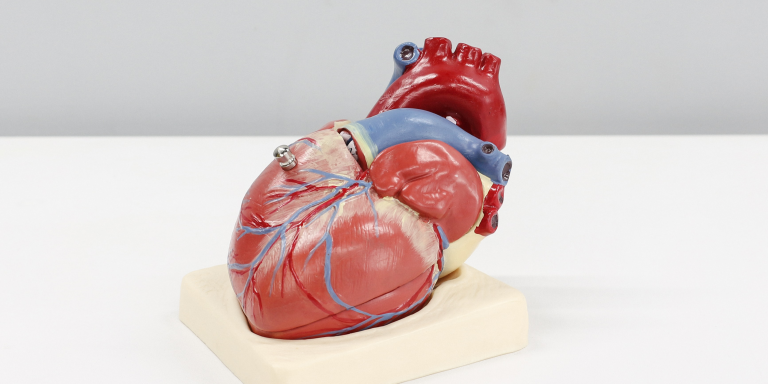
There are many applications of artificial intelligence in healthcare, with heart attack prevention in particular being the focus of much research. A team at Johns Hopkins University is proposing a new deep learningapproach that combines neural networks and survival analysis to predict a person’s likelihood of having a heart attack due to arrhythmia within 10 years. Their study, ” Predicting survival from sudden arrhythmic death using deep learning analysis of scars in the heart,” waspublished in the journal Nature Cardiovascular Research.
Nearly one million French people suffer from cardiac arrhythmia, an abnormality of the heart rate. Bradycardia occurs when the heart beats too slowly and tachycardia when it beats too fast or irregularly. Some forms of arrhythmia cause mild symptoms, but others are more serious, affecting blood supply and without treatment can lead to stroke, heart attack, heart failure or sudden death.
Deep learning is often used to predict heart attacks. Algorithms can be used to determine the condition of blood vessels, Hopkins University researchers have designed an algorithm to assess scarring patterns in patients’ heart tissue that can predict arrhythmias more accurately than doctors.
By analyzing raw images of diseased hearts and patient histories, the AI improves doctors’ predictions and clinical decision making to increase the chances of surviving sudden, life-threatening cardiac arrhythmias.
The lead author of this study is Natalia Trayanova, a professor of biomedical engineering and medicine. Her lab’s research areas are computational cardiology, machine learning in cardiology, and arrhythmia therapies. She states:
“Sudden cardiac death caused by arrhythmia accounts for up to 20% of all deaths worldwide and we know little about why it happens or how to know who is at risk. Some patients at low risk for sudden cardiac death receive defibrillators that they may not need, and then there are high-risk patients who do not receive the treatment they need and may die in their prime. What the algorithm can do is determine who is at risk for cardiac death and when it will happen, allowing doctors to decide exactly what needs to be done.”
The SCARR deep learning
algorithm
The deep learning technology is called the Cardiac Arrhythmia Risk Survival Study, or SSCAR. The name refers to the heart scars (caused by heart disease that often leads to fatal arrhythmias) that were used in the algorithm’s predictions.
Natalia Trayanova’s team is the first to use neural networks to build a personalized survival assessment for patients with heart disease. These risk metrics provide a highly accurate assessment of not only the possibility of cardiac death over 10 years but also when it is most likely to occur.
Using contrast-enhanced cardiac images that visualize the distribution of scars in hundreds of patients at Johns Hopkins Hospital, the team trained an algorithm to detect patterns and relationships not visible to the naked eye.
Currently, clinical analysis of cardiac images extracts only simple scar features such as volume and mass, severely underutilizing what the study showed to be critical data.
Dan Popescu, first author of the study and a former Johns Hopkins PhD student, states:
“The images contain critical information that physicians have not been able to access. This scarring can be distributed in different ways and it says a lot about a patient’s chances of survival. There’s hidden information in it.”
The team trained a second neural network, with 10 years of patient clinical data, that takes into account 22 factors such as patients’ age, weight, race and prescription drug use.
Survival Study Findings
The predictions of the algorithms were found to be significantly more accurate for each measure than physicians, they could be validated in tests with a cohort of independent patients from 60 US health centers, with different cardiac histories and imaging data, so the platform could be adopted everywhere.
Natalia Trayanova, also co-director of the Alliance for Cardiovascular Diagnostic and Treatment Innovation, concludes:
“This has the potential to significantly shape clinical decision making regarding arrhythmia risk and represents a critical step in bringing patient trajectory prognostics into the age of artificial intelligence. It embodies the trend of merging artificial intelligence, engineering and medicine as the future of healthcare.”
The team continues to train algorithms to detect other heart diseases. According to Natalia Trayanova, the concept of deep learning could be developed for other areas of medicine that rely on visual diagnosis.









